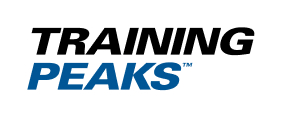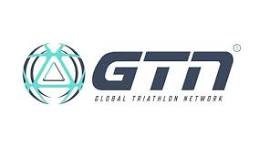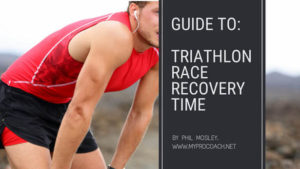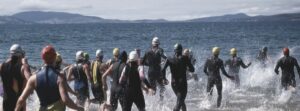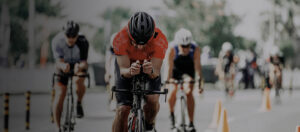Masters triathlon training tips for athletes in their 40’s, 50’s and 60’s.
If you’re worried about the effect of ageing on your triathlon performances, read on. In this blog, we’ll offer encouragement and advice on how to train and race better than ever.
When I turned 40 several years ago, I worried about how it might affect my triathlon performances. I needn’t have, because I had some of my best ever race results.
These include a first sub-9-hour IRONMAN, a first sub-16-minute 5km, my quickest marathon and my best ever swim times. All from doing less training than in my twenties and thirties.
What caused this uptick in fortunes? Turning 40 coincided with starting a family and becoming the sole bread-winner. I had very limited time for training, often with little sleep. Naturally, it forced me to think carefully about how to structure my workouts.
I focused on training smarter, rather than training more. In this blog, I’ll show you how to approach this. Before we start, it’s worth asking whether you need to change your training at all. Some Masters athletes can happily continue to train just like they did before, to good effect.
Typical indicators that you may be ready to train differently are:
- Training time availability is reduced with work and family commitments.
- You feel sleep-deprived from daily stresses.
- Your body has different needs in terms of recovery, strength and flexibility training.
- You experience recurrent injuries.
- Feeling constantly fatigued or overwhelmed by your regular training.
- Your performances are getting worse each year
How is a Masters Training Different?
1. Rest and Recovery
As we mature it can (arguably) take longer for your muscles to repair and adapt. Your personal decline in recovery rate varies according to your genetics and training history. Either way, if you don’t get enough recovery time, it reduces the beneficial effect of your workouts and leaves you more prone to injury.
For that reason, your Masters training should involve taking at least one rest day each week. And more frequent recovery weeks. For example, two weeks of progressive training, followed by an active recovery week.
Regular recovery days give you some short-term respite, whereas taking an active recovery week gives your body more chance to adapt and repair.
Scheduling your recovery time will mean that you’re fully recharged for your key workouts. And it helps you cut out the junk mileage too.
2. Strength and Conditioning
As we get older our muscle density slowly declines and it becomes important to counter the effects of age-related muscle loss.
Not only that, but by your 40’s and 50’s the cumulative effects of postural weaknesses will affect your mobility and muscle balance. For example, a stiff back from all those hours spent sitting at desks or driving cars.
As a Masters athlete, you might benefit from doing two scheduled strength and conditioning workouts per week, that promote:
- Improved muscle mass for strength and power.
- Injury prevention through increased strength, balance and mobility
- Flexibility to maintain power through a full range of movement.
- Improved bone density.
- Fat-free body mass (a leaner physique).
Don’t worry, you don’t need to spend your whole life in a gym. Your strength and conditioning workouts can be carried out at home. You just need to train for 30-minutes each time. We’re not talking Arnold Schwarzenegger here.
3. Training Intensity
Evidence suggests that higher intensity work with less volume is beneficial for the over 40’s athlete.
There is another benefit to that approach too – it frees up valuable time for recovery and work/family commitments. It’s a win-win situation.
That doesn’t mean you can ignore low-intensity endurance work, but it does reinforce the importance of speed work. Which is something Masters triathletes often overlook as they get older.
Therefore, if you want to race well into your 40’s, 50’s and 60’s, make sure you do at least one interval session in each discipline, each week.
4. Pace Judgement
With age comes experience. I’ve had some great results since hitting my forties, and that’s partly to do with being more level-headed during races. Or less of an idiot, you could say.
Get your race-pacing right and you’ll race consistently fast, time after time. You’ll be the one overtaking, when everyone else is fading in the final stages. It’s a great feeling.
Before all your target events, you should formulate a pacing plan. This needs to be based on what you can actually do – rather than what you’d like to do in your dreams.
Working with realistic data helps you set realistic aims. You can get this data from your recent training, from a recent race or from doing field tests.
We use three different field tests to measure fitness. These links take you to our online calculators – from there you can also link to instructions for each test.
Once you have a good idea of your fitness, you can create a realistic pacing strategy for your upcoming events. Here are a few examples of how to do this.
Learning how to pace yourself properly is the gift that keeps giving. Make sure you invest the time to do it right.
5. More Money, More Speed
When you’re in your twenties and thirties it’s hard to afford a nice bike or fancy shoes. But when you’re over 40 you might have a little more money to spend.
If you’re smart, you can offset many of the effects of your advancing years simply by upgrading your gear. It makes a big difference.
A friend of mine recently had a wind tunnel bike test. The findings helped him reduce his drag significantly. He was able to ride almost two minutes faster for a 25-mile time trial, for the same power output as before.
Similarly, a year ago I splashed out on a pair of Nike VaporFly 4% running shoes. Since then I have consistently run 10-seconds faster for 5km. It feels a bit like cheating, but I can live with the guilt.
Other areas where you can buy speed include reducing friction in the drivetrain of your bike. And reducing the rolling resistance of your bike tires.
6. Measure Your Recovery
Listening to your body makes a big difference when you lead a busy life, or as you get older. Try not to feel guilty when you feel tired and need to miss a workout. This is usually your body’s way of telling you to rest. It’s not a competition to see who can do the most training.
If you find that difficult, there are ways to measure your recovery state, so that you avoid training when your body is stressed.
Many heart rate monitors, like Polar’s Vantage V and Garmin’s Forerunner 935, provide training status to measure whether overreaching is verging on overtraining. The more you train, the more accurate a picture these things paint.
Whereas if you use Training Peaks, you can record metrics like sleep, tiredness and resting heart rate, to help you track changes over time.
Then there’s heart-rate variability, or HRV, training. HRV is essentially the time interval between heartbeats and is a gauge of your nervous system. It can be measured via a chest strap from HRV flag-bearers Omegawave or credible apps, like HRV4 training, that detect changes in blood volume by placing your finger on your smartphone. It’s a great way to measure stress and readiness to train.





